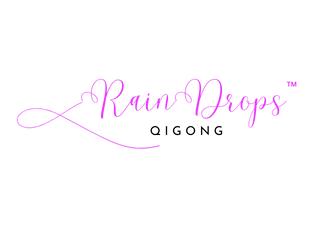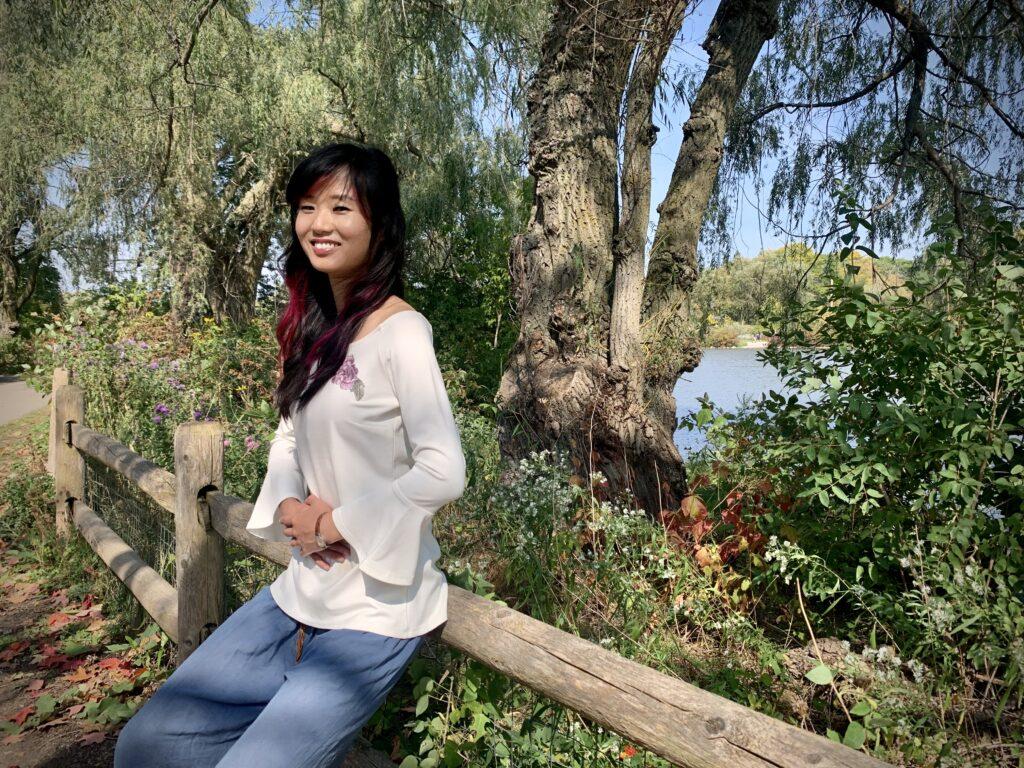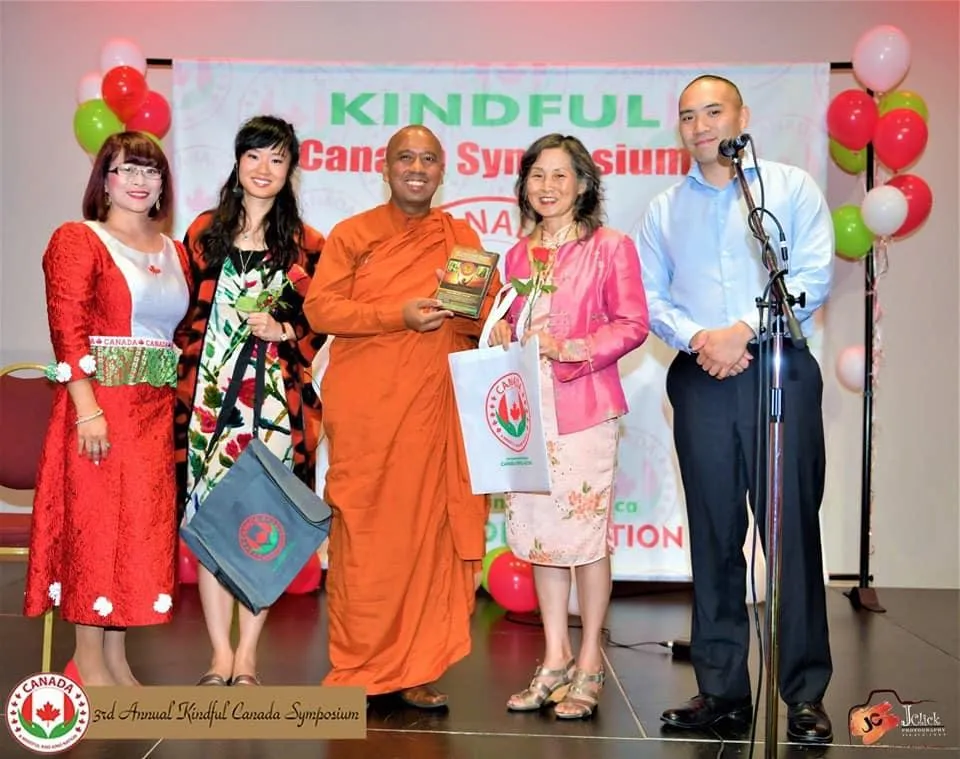
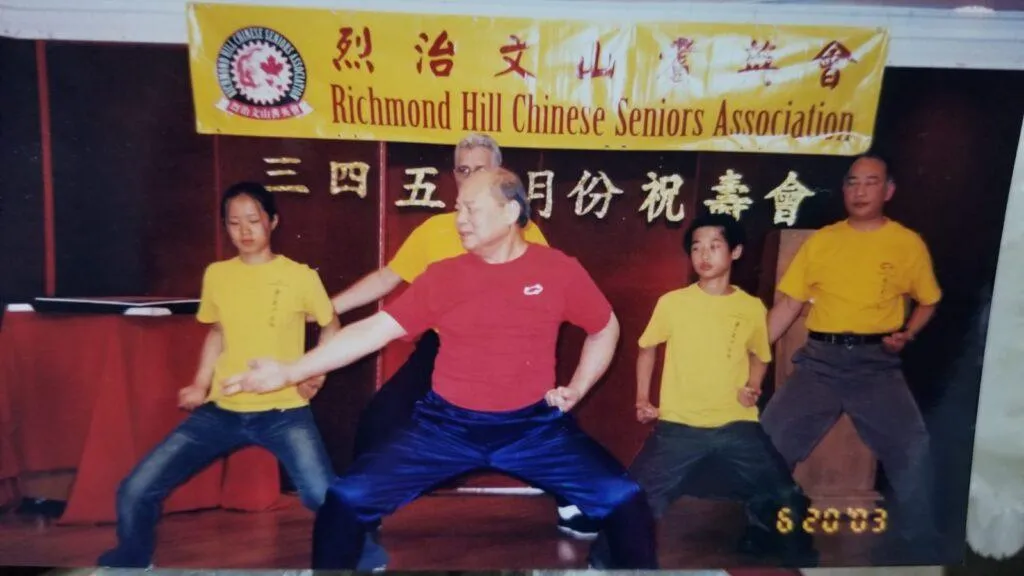
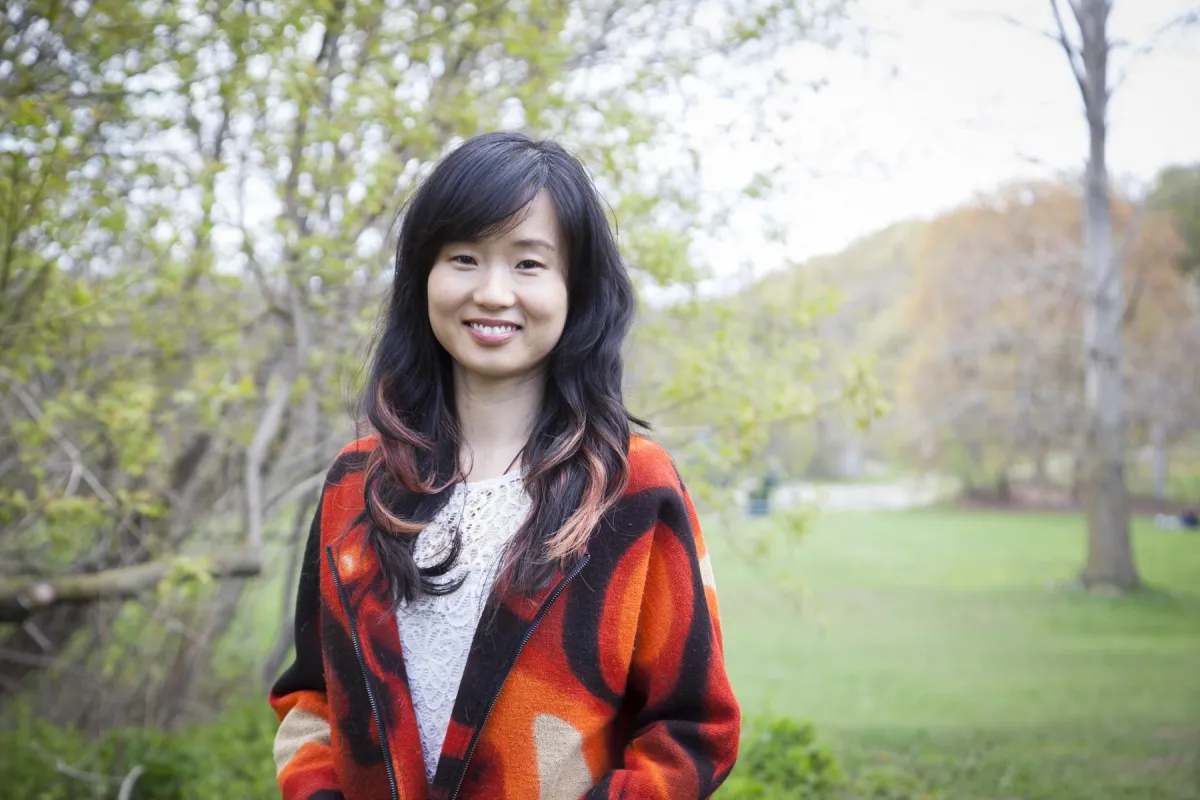
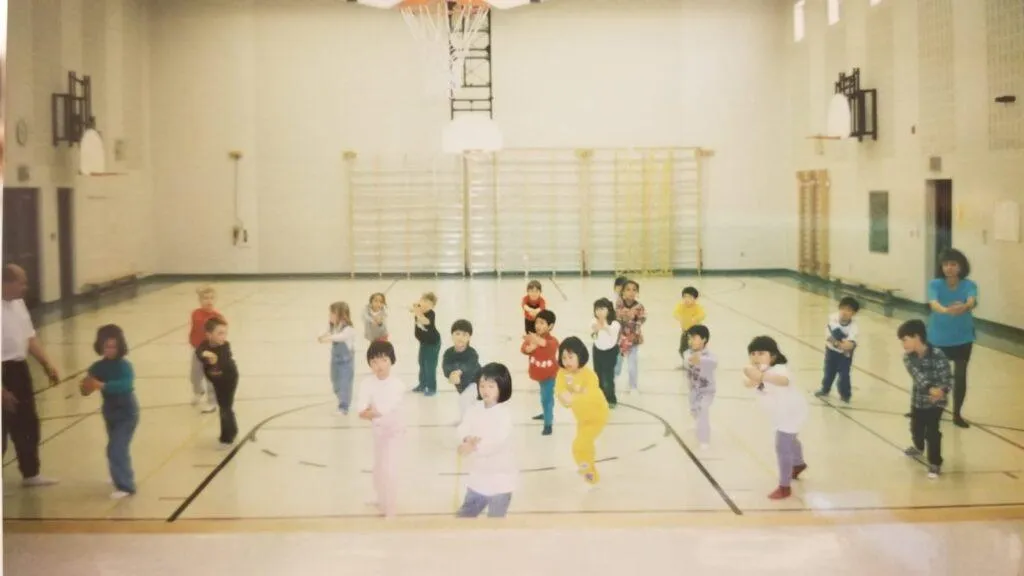
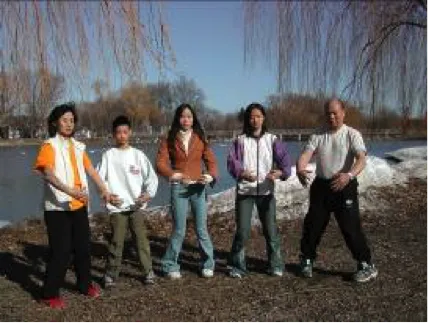

Biography of Jacqueline Chan
My journey towards spiritual dedication has been one of self-discovery, perseverance, and alignment with the guiding forces of the universe. Through years of discernment, exploration, and encountering key mentors in my life, I have embraced a path rooted in qigong, daily committed practice, and a supportive community that feels like home and connects me to my cultural roots.
As a Canadian-born Chinese individual, I embody a unique fusion of cultures. While adopting many North American attitudes, I also deeply immerse myself in the traditional healing practice of qigong, which has ancient origins in China spanning thousands of years. My spiritual practice, known as Wu's Hunyuan Gong, centers around the interconnected circuit of universal energy, Mother Earth energy, and the human being as the conduit bridging these realms.
With my upbringing within the qigong school community and the guidance of my mother, Master Teresa, who is now a Qigong Master, I have developed a strong foundation in this ancient healing art. However, I humbly acknowledge that my theoretical knowledge of Daoism and the intricate details of Traditional Chinese acupuncture and medicine may be limited. Nevertheless, my commitment to practice remains unwavering, and I am constantly learning and expanding my understanding.
Being an individual who embodies diverse identities, including being queer, I bring a unique perspective to my qigong teachings. I have integrated my experiences of spiritual healing, meditation, and clairvoyant or clairsentient moments into my practice. As an emerging psycho-spiritual psychotherapist, I strive to blend Eastern qigong and Western psychotherapy, creating a harmonious synthesis of healing practices.
In my classes, I aspire to facilitate a connection between mind and body, heart and mind, and East and West. Embracing the yin-yang symbol, which represents balance, harmony, and integration, I aim to honor tradition while making qigong teachings relevant to Western contexts. My aspiration is to bring forth the gifts of both Eastern and Western healing practices, fostering personal growth, and self-actualization for my students.
Apart from teaching qigong, I actively engage in research as a member of the SickKids Research Institute and The Mindfulness Project Team at The Hospital for Sick Children (SickKids). Additionally, I am pursuing a Masters of Pastoral Studies in Spiritual Care and Psychotherapy at The University of Toronto. My educational background includes a MA in Early Childhood Studies and a BA in Psychology.
I am privileged to carry the lineage of knowledge from Grandmaster Weizhao Wu, who I learned from between 1995 and 2006. He was a renowned Qi Gong Master in China and an expert in his field. Following his passing, I continued my journey under the tutelage of my mother, Master Teresa, who has been an inspiration in embodying mind-body expressions of stress, embodied spiritual philosophies, and honoring the feminine in qigong practice.
In my commitment to sharing qigong, I offer drop-in sessions for students on Sundays via donation, which are facilitated through the Pureland International Qigong School. Additionally, I provide free qigong classes to the staff of SickKids as part of their wellness programming, creating a space for them to experience the transformative power of this practice.
Join me on this journey of self-discovery, cultural appreciation, and holistic well-being through the practice of qigong. Together, we can cultivate harmony, balance, and integration within ourselves and our interconnected world.
For more information, please visit my website at
or reach out to me via email at
.
[1] Chi or qi refers to the universal life force energy and is a central concept in Traditional Chinese Medicine theory (eg, acupuncture, herbal medicine, feng shui, qigong) that posits balance of the mind and body depends on the flow of chi. We have connected energy channels running through the body called “meridians” that correspond to organs. (Matos et al., 2021)
[2] Pureland International Qi Gong School: www.purelandqigong.com As an adult, I currently share the meditative practices of Qigong to hospital staff and in classes. The sense of energy, hope, joy, compassion, and resilience that I have found in my daily qigong practice. I am currently studying psychotherapy through an integrated spiritual lens through Buddhism and Daoism at The University of Toronto.
Grandmaster Weizhao Wu: Learning from 1995-2006 Starting in 1995, I followed my mother to learn chi gong, tai chi, and kung fu from Grandmaster Weizhao Wu at the park. Amongst some of his achievements: He recieved one of the highest titles of Qi Gong Master in China, was considered a National Treasure, Western Fencing champion, and he contributed to the development of the provincial physical education curriculum in the province of Guangzhao. He also was an academic, and lead a 40-person research team into the benefits of his Wu’s eye qi gong program for high school students. Chi gong (qigong) was his life-long hobby he learned from the mountain schools in China. He came to retire in Canada, he created the chi gong forms I teach today with the essential chi gong (qi gong) movements. From him, I’ve learned so much about the foundations of qi and being a compassionate teacher.
Master Teresa: Learning from 2006-Present Following the passing of grandmaster Wu, I learned from his successor, my mother, Master Teresa (Pureland International Qigong School), learning how to transform negative emotions such as grief. She’s been an inspiration as a loving single mother:
Mind-body (psycho-somatic) expressions of stress Embodied spiritual philosophies Honoring the feminine in qigong practice
My Qigong Training
Health & Fitness Qigong (Level 1)
Konghaim Qigong (Level 2)
Silk Eight Brochades
Chair Qigong
Qi Gong for Yoga
Remote Fa Chi (virtual – external chi emission)
Fa Chi (in person)
Qi Balancing
Full body-mind relaxation
Mindfulness-based movement
Psych-K: Change your unconscious & keep the change
Practice Qi Gong (chigong)
Introductory Presentations
Education Background
B.A. Honours Psychology
M.A. Early Childhood Studies
Masters of Pastoral Studies, Spiritual Care & Psychotherapy (Buddhism foci and interfaith) (2024),
The University of Toronto
Our instructor
Jacqueline Chan, a Chinese Canadian with a deep appreciation for her cultural heritage, has embarked on a profound journey with Qi Gong. From a young age, Jacqueline has learned and practiced this ancient art form alongside her mother, Master Teresa, and the esteemed Grandmaster Wu, spanning nearly two decades of dedicated training and refinement.
Drawing upon her unique cultural background, Jacqueline approaches Qi Gong with a keen sensitivity and understanding of its roots in traditional Chinese healing and spirituality. With a deep reverence for her ancestry and a commitment to cultural preservation, she brings an authentic and respectful perspective to her teachings.
As a Chinese Canadian, Jacqueline has personally navigated the intersection of cultures, embracing the rich diversity that shapes her identity. Her own experiences of bridging different worlds and finding harmony in the midst of cultural fusion inform her approach to Qi Gong. Through her practice, she invites individuals from all backgrounds to explore the transformative power of Qi Gong, fostering a sense of inclusivity and unity that transcends cultural boundaries.
With her diverse educational background in psychology, early childhood studies, and clinical research, Jacqueline brings a holistic perspective to her teachings, incorporating both ancient wisdom and contemporary insights. Currently studying psychotherapy through a Buddhist/Daoist theological lens, she seamlessly weaves together the spiritual and psychological dimensions of Qi Gong to offer a comprehensive approach to well-being.
In her classes, Jacqueline creates a safe and nurturing environment where cultural sensitivity is cherished and celebrated. She recognizes the unique journeys and challenges faced by individuals from diverse cultural backgrounds, and her teachings reflect a deep respect for the interplay of culture, spirituality, and personal growth.
Join Jacqueline on a transformative Qi Gong journey that embraces cultural sensitivity, honors tradition, and fosters a sense of harmony and unity within a multicultural world. Experience the profound benefits of Qi Gong as you embark on a path of self-discovery, cultural appreciation, and holistic well-being under Jacqueline's expert guidance.
SUNDAY CLASSES:
www.purelandqigong/workshops
(will link to an EventBrite registration page)
Contact me: chiwithjacqueline@gmail.com
S E L E C T Q I G O N G P R E S E N T A T I O N S
Qigong Contributor: Awareness Cultivation & Embodiment, New College, University of Toronto
Windvane: Paths to Wellbeing:
Online joint mindfulness resource for students with filmed short videos. Lead by Dr. Frances Garrett Resource: www.windvane.life
Chan, J.H. (2022) "Minding our Minds" in Higher Education Conference, Victoria University within The University of Toronto
Chan, J. H. (May 2022). An introductory session for overall health and fitness qigong. Mindfulness & Compassion Rounds, The Hospital for Sick Children. Chan, J. H. (Dec 2021). Going with the flow: Letting go with Qigong. Mindfulness & Compassion Rounds, The
Hospital for Sick Children Chan, J. H. (Dec 2021). Guest Lecture: Qigong Introduction. In “Socially Engaged Buddhism” New College, University of Toronto
Chan, J. H. (Nov 2021). Short Qigong Mindfulness Break. SickKids Stroke Patient & Family Night.
Chan, J. H. (Oct 2021 & Nov 2021). Qigong Practice. Emmanuel College Contemplative Practice Community.
Yeung, T. & Chan, J. H. (Feb 2021). An Introduction to Chi Gong. Mindfest, Dept. Psychiatry, The University of
Toronto. Chan, J. H. (July 2020). An Introduction to Chi Gong. Mindfulness & Compassion Rounds, The Hospital for Sick
Children. Chan, J. H. (May 2020). Leading a Guided Chi Gong Practice. Breathing Space Facilitator, A Mindful Society Conference. Presenter profile: https://amindfulsociety.org/speaker/jacqueline-chan-m-a/
Chan, J. H. (Sept. 2019). Leading a Guided Chi Gong Practice. The 3rd Annual Kindful Canada Symposium, Oakville, ON. Presenter profile: https://canadaamindfulnation.ca/speakers
Chan, J. H. (May 2019). Leading a Guided Chi Gong Practice. A Mindful Society Conference Chan, J. H. (Sept. 2018). Canada’s Top Choice Beauty Pageant Finalist.
Chan, J. H. (Feb. 2017). Qi Gong for Stress Relief and Anxiety Management: For Teens. Youth Stream. The
20/20 Canadian Safe School Network Conference: A Clear Look at the Past, Present, & Future of Safety Education.
Online Program for Home Study
Rebalance with Qi meditation with Jacqueline Chan.

Limitedless healing
See Our Curated Content
Videos to help you return to a peaceful state is coming!
Email: ChiwithJacqueline@gmail.com
Web : ChiwithJacqueline.com
